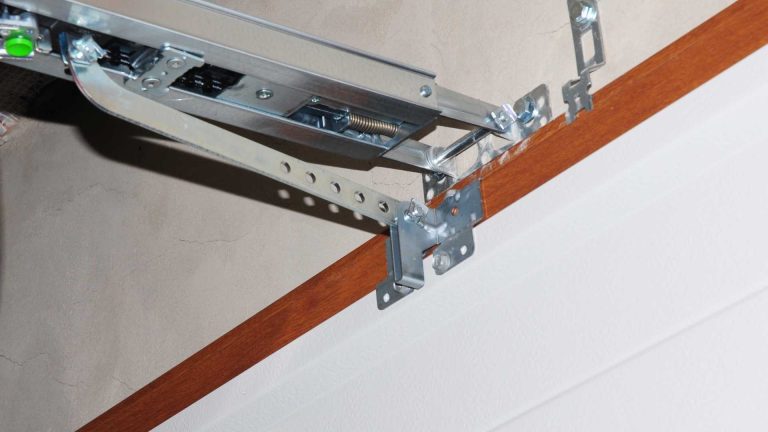When To Replace The Garage Door Spring in Houston? A Guide to Choosing the Best Time
Door springs are the single most important element of a garage door. Without them, the door will not open or close properly and you may experience accidents when leaving your garage. When to replace your garage door spring is an important decision that can make a big difference in the overall efficiency of your vehicle. You will have to change your garage door spring when the old spring has lost its ability to support the weight of heavy doors and/or heavy cars.

What is a Garage Door Spring?
Garage door springs are coiled metal wires that attach to the top of the door and help it open and close. There are two basic types of garage door springs: torsion springs and extension springs. Torsion springs attach directly to the header above the door, while extension springs are located on either side of the door frame and attached to the door track.
A garage door spring can last anywhere from 5-10 years, but this lifespan can be drastically shortened if the door is opened and closed frequently. It is important to keep an eye on the condition of your garage door springs and replace them when necessary to avoid accidents or costly repairs.
When To Replace Your Garage Door Spring
There are a few key factors you should consider when deciding whether or not to replace your garage door spring:
-The age of your current garage door spring
-How often the door is used
-The weight of the door
-The weight of any objects regularly stored in the garage
If your garage door spring is more than five years old, it’s probably time for a replacement. If you use your garage door frequently or the door is particularly heavy, you should replace the spring every 3-5 years. Springs can break under even a small amount of weight, so it’s always best to be safe rather than sorry. If you have any objects regularly stored in your garage, their combined weight should also be considered when deciding whether to replace your garage door spring.
Replacing a Garage Door Spring Yourself
If you’re comfortable with basic DIY repairs, you can probably replace your garage door spring yourself. However, if you’re not sure how to do it or feel uncomfortable trying, it’s best to leave the job to a professional. Replacing a garage door spring can be dangerous if not done properly, so it’s important to take all necessary precautions before attempting it.
If you are replacing your garage door spring yourself, follow these steps:
1.) Make sure the power to your garage is turned off at the fuse box or circuit breaker. Once the electricity is shut off, remove the panel covering your opener’s motor. If you have a screwdriver with an adjustable head, turn it so that there are only small gaps between the screws and set them all to one side until removed. Now slide out each of the bolts holding your garage door springs in place and keep track of which one goes where for proper replacement later on.
2.) Carefully lift up on your garage door by pulling down on both sides of the bottom section directly under its center beam (be careful not to lift it too far up or you may damage the garage door rollers).
3.) Prop up your garage door with a 2×4 under the center beam. This will keep your garage door propped up and allow you to crawl underneath to work on the springs.
4.) Remove both of your old springs and set them aside in a safe place for disposal later.
5.) Attach the extension spring (or another one just like it) to the bottom hole on each side of the header bracket, making sure not to cross over any wires from other components on your garage door system. Insert one end of each new spring into its appropriate holes until they sit 3-6 inches apart from each other on opposite sides of the header bracket.
6.) Attach the center of both ends of each new spring to the bottom hole on either side of your garage door’s header bracket and tighten until snug. If you have a padlock, attach it through both open ends and lock it into place to ensure that your springs don’t come undone while you’re working underneath the garage door.
Properly securing and maintaining your garage door springs will help ensure the safe and smooth operation of your garage for years to come. Replacing them regularly can also allow you to avoid costly repairs or even serious injury if they happen to break unexpectedly. For more information about how often springs should be replaced, contact local professionals with expertise in servicing garage doors.
How Do You Know When to Replace Your Garage Door Spring?
Replacing your garage door spring is a critical part of maintaining your garage door system. However, it’s not always easy to know when it’s time for a replacement. Here are a few factors to consider:
-The age of your current garage door spring
-How often the door is used
-The weight of the door
-The weight of any objects regularly stored in the garage

What are the Different Types of Garage Door Springs?
There are two main types of garage door springs: torsion springs and extension springs. Torsion springs are located above the garage door opening, while extension springs are located along the sides of the door. While both types of springs are made up of the same basic components, torsion springs have a larger diameter and are more durable. Garage door extension springs have less tension than torsion springs because they only pull down rather than pull up.
How Often Should You Replace Your Garage Door Spring?
It’s important to replace your garage door spring as soon as you notice any signs of wear and tear. Inspecting them regularly can help ensure that they don’t break unexpectedly and cause potentially serious damage to other parts of your garage door system.
If you want to keep replacing your own garage door spring, it’s a good idea to mark the replacement date somewhere noticeable on the header bracket so that you know when it needs to be replaced again. Professionals recommend replacing garage door springs every 3-5 years, but this can vary depending on the age of your current springs, how often the door is used, and the weight of the door.
What are the Pros and Cons of Replacing Your Old Springs with New Ones?
Replacing your old garage door springs with new ones can have a number of benefits, including:
-Eliminating any wear and tear on the door that may cause it to break prematurely
-Reducing the amount of force needed to open and close the garage door
-Ensuring that your garage door operates safely and smoothly
There are, however, a few potential drawbacks to replacing your old springs with new ones. One is the cost of purchasing new springs, which can vary depending on the type and size of the spring. Installing new springs also requires a certain level of expertise, so it’s best to leave this work to professionals. Finally, if your garage door is particularly heavy or if there are objects regularly stored in the garage, replacing the springs may not be enough to keep it functioning properly.
How Can You Save Money on Replacing Your Garage Door Spring?
There are several ways that you can save money when replacing your garage door spring.
1.) Consider purchasing a new spring rather than replacing the entire system whenever possible. This will require less time and expertise but may also offer fewer benefits to the overall functionality of your door.
2) If you must replace the entire system, choose an option with fewer moving parts for lower maintenance costs over time.
3.) Shop around for better prices by comparing quotes from local suppliers, including those who specialize in garage doors and manufacturers of garage door components.
4.) Investigate other household repairs that you can do yourself that will help offset the cost of replacing your garage door spring.
Replacing your garage door spring can seem like a daunting task, but following these tips can help make the process easier and more affordable. If you have any questions or concerns, be sure to contact a professional for assistance.
When it comes time to replace your garage door spring, it’s important to consider the age of your current springs, how often the door is used, the weight of the door, and other factors. There are two main types of garage door springs – torsion and extension – and each type has its own unique benefits and drawbacks. Torsion springs are located above the garage door opening while extension springs are located along the sides of the door. Inspecting your garage spring regularly can help you know when it’s time to replace this part of your system. DIYers who want to replace their own springs should mark the replacement date on the header bracket so that they know when it needs to be replaced again, and professionals recommend replacing garage door springs every 3-5 years.
Pros:
-Eliminates premature wear and tear on the door
-Reduces force needed to open and close the door
-Ensures safe and smooth operation
Cons:
-Potential for more serious damage if spring breaks unexpectedly
-Possible risks associated with working with heavy machinery
-Cost of purchasing new springs, especially heavier duty options
